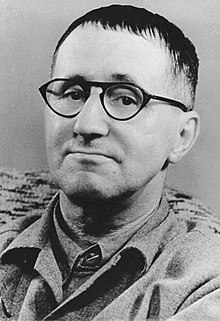|
2027 in public domain
 When a work's copyright expires, it enters the public domain. The following is a list of creators whose works enter the public domain in 2027. Since laws vary globally, the copyright status of some works are not uniform. Entering the public domain in countries with life + 70 years
With the exception of Belarus (Life + 50 years) and Spain (which has a copyright term of Life + 80 years for creators that died before 1987), a work enters the public domain in Europe 70 years after the creator's death, if it was published during the creator's lifetime. For previously unpublished material, those who publish it first will have the publication rights for 25 years. In addition several other countries in the world have a limit of 70 years. The list is sorted alphabetically and includes a notable work of the creator.
Countries with life + 60 years
In Bangladesh, India, and Venezuela a work enters the public domain 60 years after the creator's death.
Countries with life + 50 years
In most countries of Africa and Asia, as well as Belarus, Bolivia, New Zealand, Egypt and Uruguay, a work enters the public domain 50 years after the creator's death.
Countries with life + 80 years
Spain has a copyright term of life + 80 years for creators that died before 1987. In Colombia and Equatorial Guinea a work enters the public domain 80 years after the creator's death. United States
Notable works entering the public domain in the United States in 2027 include Universal Pictures' Frankenstein and Dracula films Under the Copyright Term Extension Act, books published in 1931, films released in 1931, and other works published in 1931, will enter the public domain in 2027.[1] Sound recordings that were published in 1926 and unpublished works whose authors died in 1956 will also enter the public domain. The Disney animated short The Moose Hunt, featuring the first named appearance of Pluto, enters the public domain. Universal Pictures' Frankenstein and Dracula adaptations will be among the works to enter the public domain. In addition, the character Dick Tracy will enter the public domain. Other significant films entering the public domain include Charlie Chaplin's City Lights, 1931 Best Picture Oscar-winner Cimarron, Gangster films Little Caesar and The Public Enemy, the Marx Brothers film Monkey Business, Laurel and Hardy's first feature film Pardon Us, Fritz Lang's serial killer drama M, Josef von Sternberg's Dishonored starring Marlene Dietrich, Michael Powell's directorial debut Two Crowded Hours, Otto Preminger's directorial debut The Great Love, F. W. Murnau's final film Tabu: A Story of the South Seas, G. W. Pabst's The Threepenny Opera, Mário Peixoto's Limite, Dave Fleischer's Bimbo's Initiation, the first Canadian sound film The Viking, the first Soviet sound film Road to Life, the first Japanese sound film The Neighbor's Wife and Mine, the first Bollywood-musical Alam Ara (now believed lost) and the first Chinese sound film Sing-Song Girl Red Peony. Artworks entering the public domain include Salvador Dali's painting The Persistence of Memory, Georgia O'Keeffe's painting Cow's Skull: Red, White, and Blue, Grant Wood's painting The Midnight Ride of Paul Revere, Thomas Hart Benton's painting America Today, Paul Landowski's sculpture Christ the Redeemer, Pablo Picasso's sculpture Bust of a Woman (Marie-Thérèse), Man Ray's Électricité-photo series, August Sander's photograph Secretary at West German Radio, Cologne and M.C. Escher's early print Atrani, Coast of Amalfi. Important literary works entering the public domain include Pearl S. Buck's The Good Earth, Virginia Woolf's novel The Waves, Lynn Riggs' play Green Grows the Lilacs, Erich Maria Remarque's novel The Road Back, Winston Churchill's final volume of The World Crisis, Georges Simenon's novel The Strange Case of Peter the Lett (containing the first introduction of inspector Inspector Jules Maigret) in its original French, Hergé's Tintin in the Congo in its original French black-and-white version, and Jean de Brunhoff's The Story of Babar in its original French. See also
References
External links
|

